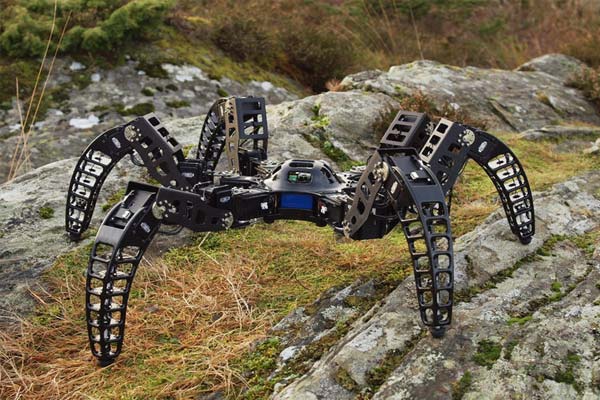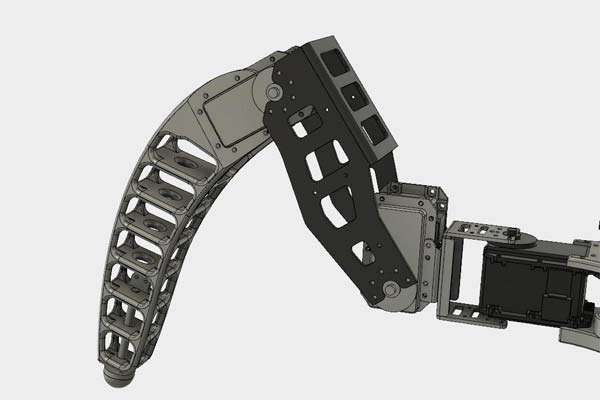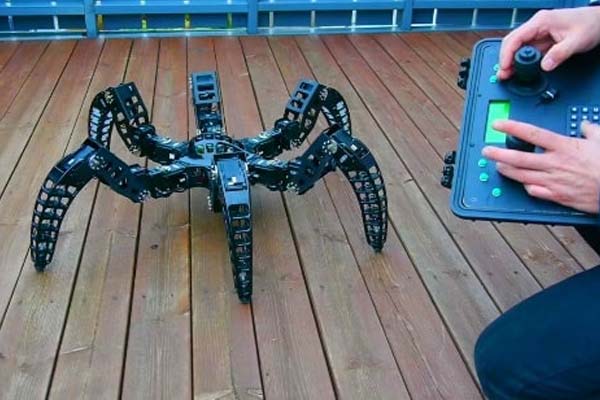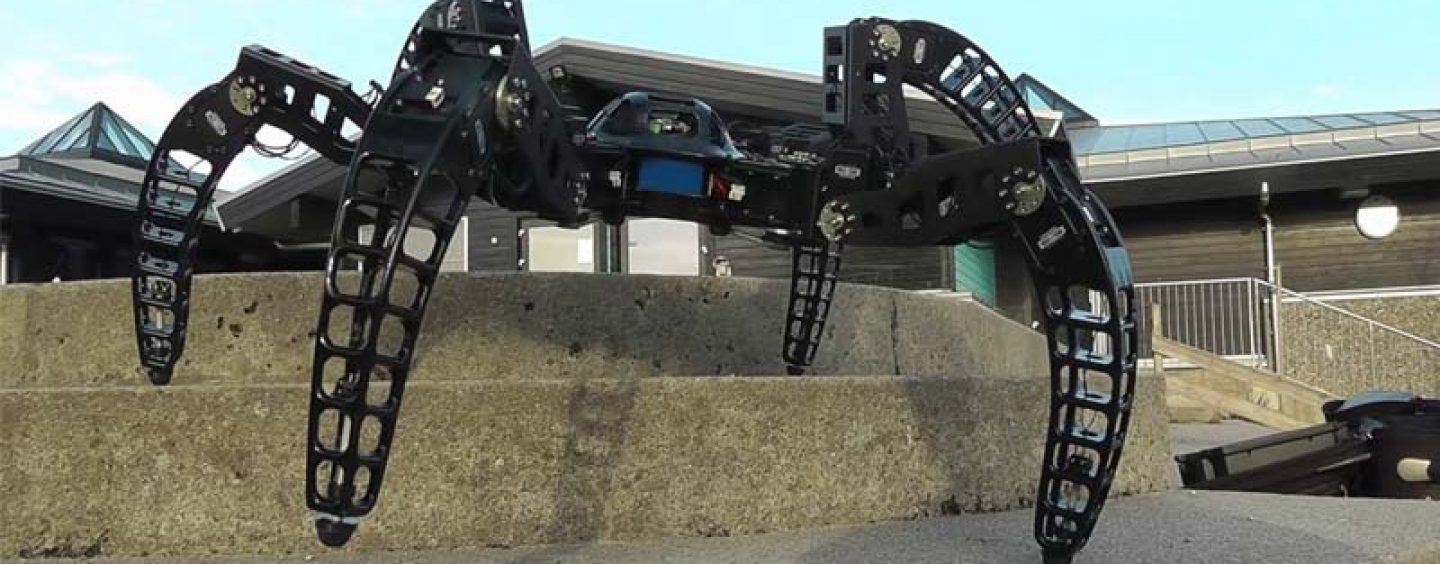The innovative homemade robot spider is known as MX-Phoenix hexapod. The device was designed to maneuver in tough terrain. The robot is light in weight and has a small body section and large leg section. A convenient remote controller controls the robot. It resembles a spider though it has six legs unlike the spider, which has 8 legs. It moves faster and more efficiently. 18 motors power the device and allow it to have smooth motions. It is programmed in a way that it moves smoothly over the tough terrain. All its body parts are 3D printed in ABS plastic.
The Manufacturer Of The Robot Spider
The robot spider is designed in Zenta Robotic Creations. A Norwegian Engineer Kare Halvorsen designed it. His ambition is to learn and create new robots. He is inspired by insect’s hexapoda locomotion to design the robot and many other robots that resemble various insects. He designed the hexapod robot in his home garage to accomplish the goals he didn’t achieve during his first project i.e. a more dynamic gait engine and terrain adaptations.
The Design Of The Spider Robot

Its design resembles the spider. The robot mimics the natural joint interconnection of the spider. It features a small body and large legs. It is a hexapod robot as it consists of six legs. It has 18 motors that are located on the legs. Its body and legs are 3D printed. The device is light in weight, as it weighs only 5 kilograms.
The Making Of The Robot Spider
The hexapod robot is designed by use of a more powerful and larger Dynamixel servo from Robotis. The engineer used MX-106T to make the femur and tibia section and MX-64T for the coxa servos. He designed the parts by use of a 3D printer to create the 3-dimensional curved parts. 3D printing allows one to create different shapes that are impossible through conventional manufacturing methods. However, it is slow and pricey. He used a sophisticated material known as the ABS material. He designed the hexapod body and leg and joined the parts by use of the servo wire from the femur to the coxa servo. He designed a wire protector under the c-bracket. The spider robot utilizes the bipod gait.This allows it to keeps four legs on the ground and the others on motion unlike insects, which utilizes tripod gait making them be faster.
Features Of The Robot Spider

- The hexapod body: He started with the hexapod body, which contained the coxa servos (MX-64T), a 3S 500mAh Lipo, and Teensy 3.6 + Kurt’s T3. 1 breakout board.It has CAD images that are easier to see as compared to photos. Its battery slides inside the body between the body section, which is printed in ABS and treated with Acetone vapor. This results in a solid strong structure.
- The leg: He designed a tibia by use of Fusion 360 and used the Interbotix Tibia’s as the femur. He added a foot sensor that is made of few parts. He then printed it at 250C/100C using a cabin with a heater set at 35C. He treated the parts with acetone vapor to strengthen the parts in a pot whose sides are covered with some clothes. Each leg has motors. Not all of its legs are needed for stability. Some are used to manipulate a payload or reach new foot placement. This allows it continue moving even when some of its legs are disabled.
- The foot sensor or switch: He used a micro-switch, a rubber 3M knob, an anodized aluminum rod, and 3D-printed washer and stopper for the foot-switch close-up.
- The motors: The device contains 3 motors on each leg amounting to 18 motors. They are managed by use of superior management algorithms. The algorithms are computed inside an onboard microcontroller.
The Importance Of The Hexapod Robot

The design might appear scary to those who have a phobia of spiders. The device flexible and can move smoothly over uneven surfaces with ease. It is useful in various ways such as in search and rescue missions. Its hexapod design is secure as compared to the 4-legged robots. This might help it to preserve shifting if the legged is disabled. It can still move even when the legs are disabled. The robot can be used as an animatronics device for motion pictures. It may also be used to test biological theories about insect motor control, locomotion, and neurobiology.
How To Use The Device?
The robot is designed in a way that it is easy to manipulate. You only need to control it by use of the custom-made distant remote controller. Those with no coding skills can use it with ease.
See More: You Can Now Buy and Maintain a Car with the Latest Amazon’s Services
Conclusion
MX-Phoenix hexapod is a robot that resembles the spider but it is a bit more efficient and faster. It is designed to stroll on the uneven tough terrain. The homemade spider robot features smooth movement even on the uneven outdoor terrain. It can move on the stairs, rocks etc. the spider robot mimics the spiders. The designer used engines to mimic the spider. Halvorsen plans to improve on the gait algorithm and other minor modifications in future.





